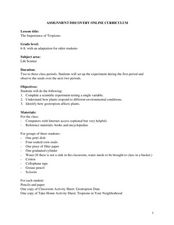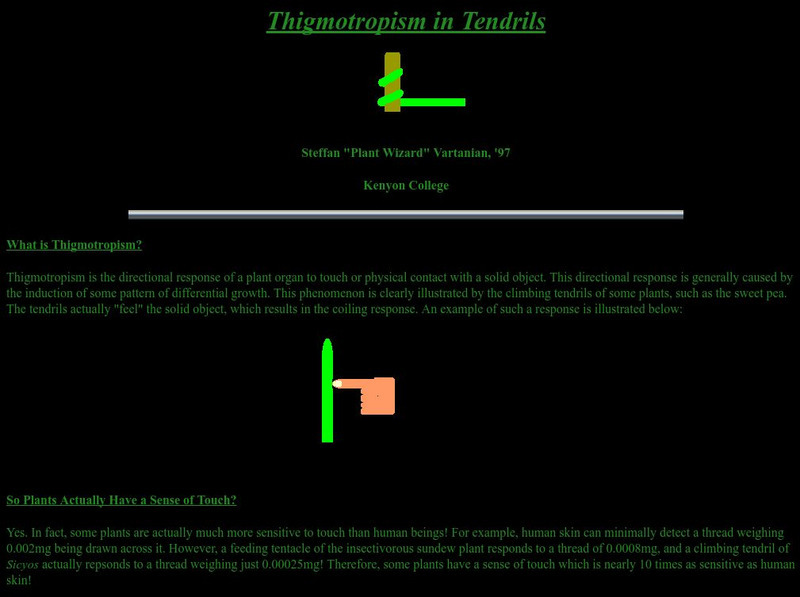Curated OER
The Importance of Tropisms
Middle schoolers investigate plant tropisms using the scientific method. In this life science lesson, students learn about tropisms and test the response of corn seedlings to gravity. Response questions, extensions, and an...
Science Buddies
Science Buddies: Vines & Spines: Thigmotropism in Morning Glory Tendrils
We tend to think of plants as immobile, but the tendrils of a vine, such as the morning glory, actually move in response to touch. Tendrils wrap around structures, which give the plant something to grow on. In this science fair project,...
Ohio State University
Ohio State University: Plant Signals & Sensors
A concise review of how plants sense environmental conditions and respond to stimuli. Good illustrations and a quiz enhance learning along with links to additional information.
Other
Kenyon College: Thigmotropism in Tendrils
What is thigmotropism? Do plants have a sense of touch? What causes plants to curve toward the stimulus? Animated illustrations help to provide these answers and more. Hint: highlighting the text makes it easier to read.
CK-12 Foundation
Ck 12: Life Science: Tropisms
[Free Registration/Login may be required to access all resource tools.] Plants may not be able to move, but they are able to change how they grow in response to their environment. Growth toward or away from a stimulus is known as a...
CK-12 Foundation
Ck 12: Life Science: 7.13 Tropisms
Learn how plants respond to different environmental stimuli.
Curated OER
Kenyon College: Thigmotropism in Tendrils
What is thigmotropism? Do plants have a sense of touch? What causes plants to curve toward the stimulus? Animated illustrations help to provide these answers and more. Hint: highlighting the text makes it easier to read.






